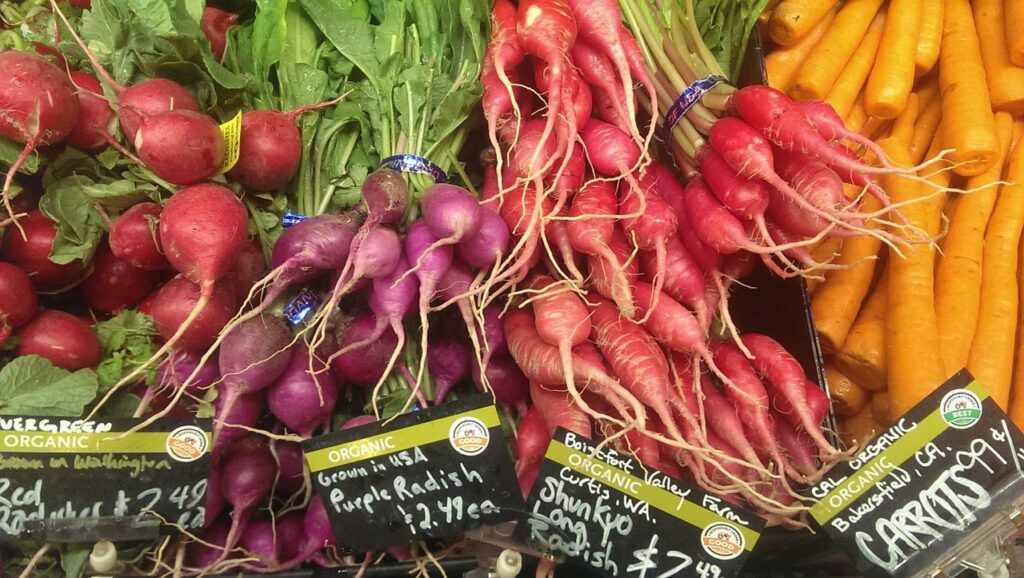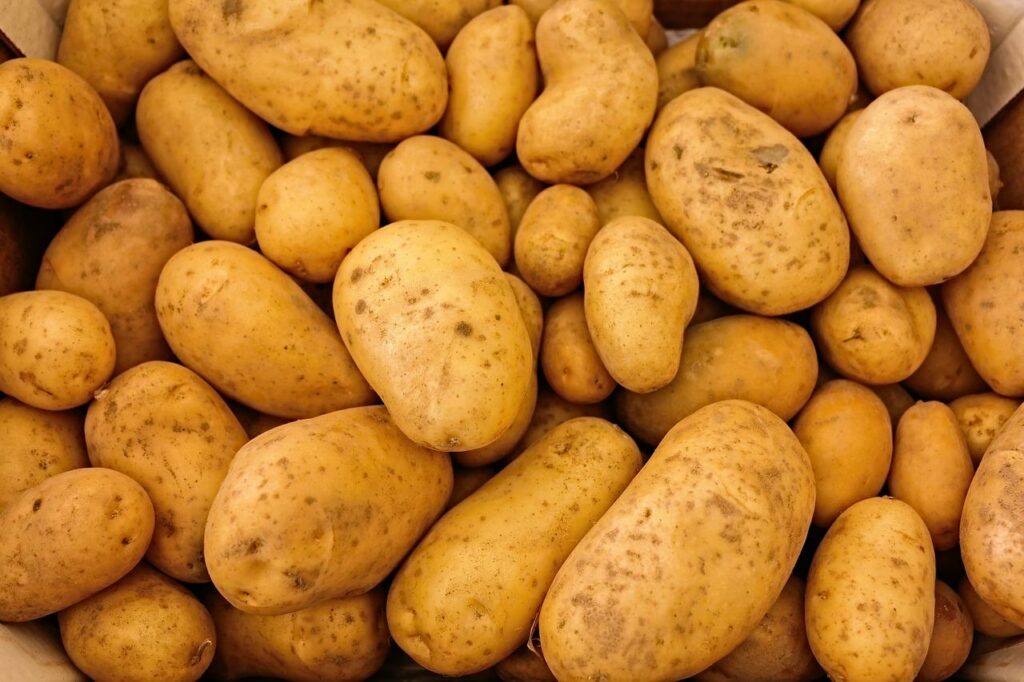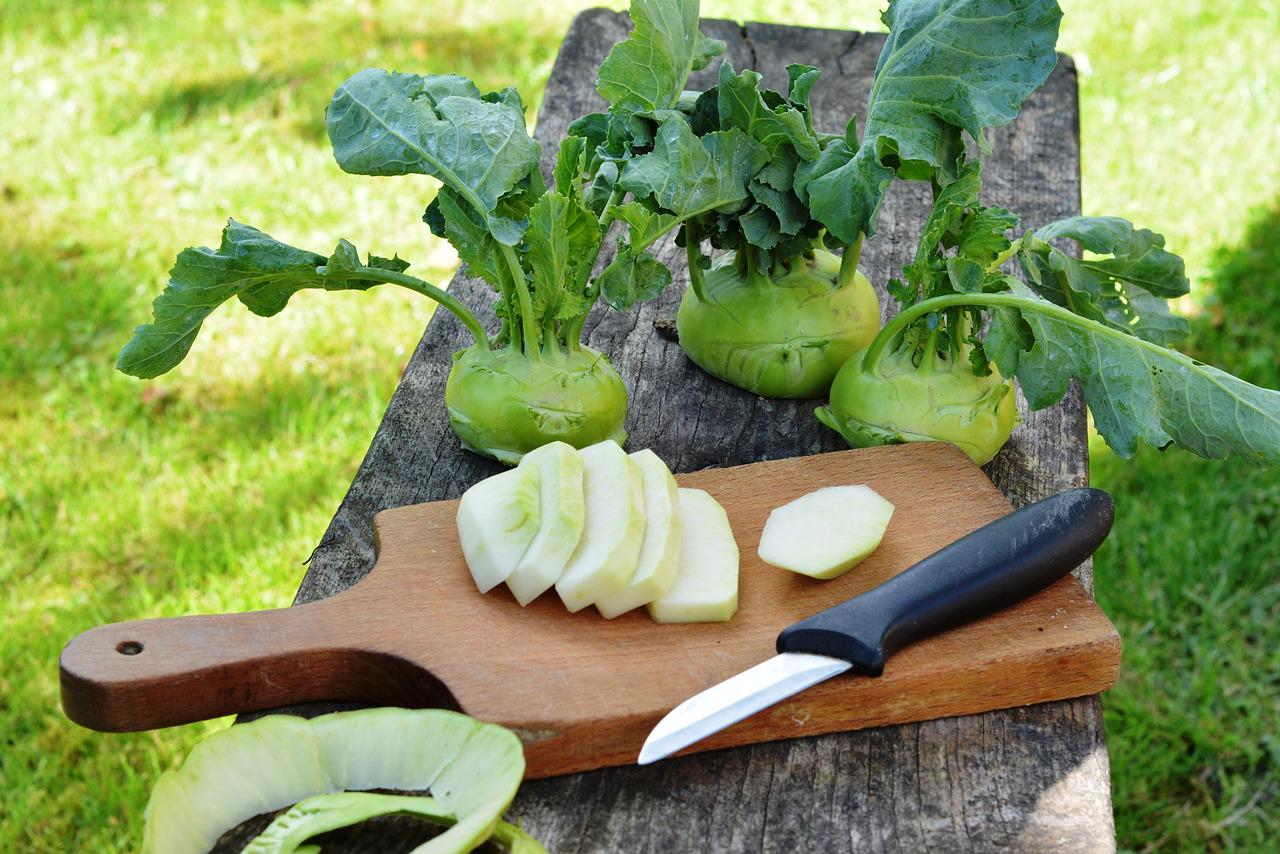Kohlrabi is a distinct type of vegetable with roots in European cuisine and is typically not common. So, if you need a substitute for kohlrabi, several options will work just fine.
This odd-looking vegetable, also known as German turnips, is known for thriving in cold weather. Kohlrabi is related to cabbage and kale, but it looks and tastes quite different.
This article will discuss kohlrabi and some delicious kohlrabi alternatives to spruce up your meal.
Contents
What Is Kohlrabi?
Kohlrabi belongs to the family Brassica oleracea. It is a combination of the German terms for kale (kohl) and rabe (rabi) (above the ground).
It’s easy to determine that kohlrabi is related to cabbage and turnips based on its form and leaf patterns. You’ll find both purple and greenish-white kohlrabi. And while each bears a somewhat different flavor, both are popular meal ingredients.
This cruciferous crop tastes something like a cross between cabbage and broccoli stems. The greenish-white variety is slightly less sweet with a more peppery flavor than the purple kind.
Substitutes For Kohlrabi
Some different vegetables and herbs serve as excellent substitutes for kohlrabi, depending on the dish you’re making. Though they have slight differences in taste, texture, and appearance, these alternatives will do just fine.
1. Radishes
The red balls we know as radishes originated in China before becoming a vital vegetable globally. A kohlrabi’s flavor shifts from sweet to radish-like as it ages. Therefore, radishes can be used as a replacement for kohlrabi in any salad.

However, remember that the radish is typically spicier than the kohlrabi. And too much radish can ruin your meal if you’re not keen on an intense spicy taste. You may make a delicious snack by slicing a few radishes into salads, stews, and roast dishes that call for kohlrabi.
2. Green Turnips
Kohlrabi is very close to turnips because of its relation to the brassica family. Both vegetables are so similar that they can be used in place of one another with no problems. However, green turnips may not be as tender as their white counterparts.
Turnips take on a sweeter taste and tender texture once cooked. It’s also important to note that you must cook them as you can’t use them raw. Raw turnips have an intense and gritty flavor and are incredibly hard to bite into.
Slow cooking, sautéing, or mashing are the best options when preparing green turnips. Green turnips could be a great addition to spruce up your dishes with their crisp texture.
3. Celeriac
Originating from the Mediterranean basin, these brown bulbs make an impressive substitute for kohlrabi. Whether you eat it raw or cooked, you’ll get that familiar kohlrabi-like crispness in your mouth. This twisted-looking root, which tastes a lot like celery, might also be used to add some heat to your recipe.
However, note that celeriac skin is thicker and tougher than kohlrabi. Therefore, you’ll need to peel the celeriac before using it.
4. Broccoli Stems
Broccoli stems are a great option when looking for a substitute for kohlrabi. In terms of taste and texture, they are very similar.
However, broccoli stems lack the kohlrabi’s peppery bite and sugary sweetness. Nevertheless, they have a wonderful flavor when cooked in a skillet, oven, or steamer.
Due to their often tough nature, broccoli stems are typically removed when preparing broccoli. Therefore, removing the outer layer of the stem before cooking prevents the stem from becoming overly fibrous. This step will make the broccoli stems softer and taste more like kohlrabi.
5. Potatoes
Potato is not a perfect substitute for kohlrabi, but it can be used in its place if you find yourself in a pinch. The potato is quite dense and contains a great deal of starch.

But the starchiness of the potato may add an interesting new texture to your favorite kohlrabi meals. Wash and scrub your potatoes thoroughly before use to remove any potentially toxic substances. After that, you can cut them up as you like and peel them if you prefer.
6. Swiss Chard
Finally, swiss chard, which shares the earthy, savory flavor of green kohlrabi, can be used in its place. It also has a similar texture to kohlrabi when raw.
Swiss chard can be a bit harsh when eaten raw. However, the bitterness subsides when cooked and is replaced by a mild, sweet taste similar to kohlrabi. Swiss chard, like green kohlrabi, is a superfood with healthy nutrients, including minerals and antioxidants.
Conclusion
Finding kohlrabi shouldn’t be too difficult these days as most grocers should have it on their shelves. However, if you can’t find it and need a substitute for kohlrabi, any of the above options will do well.
